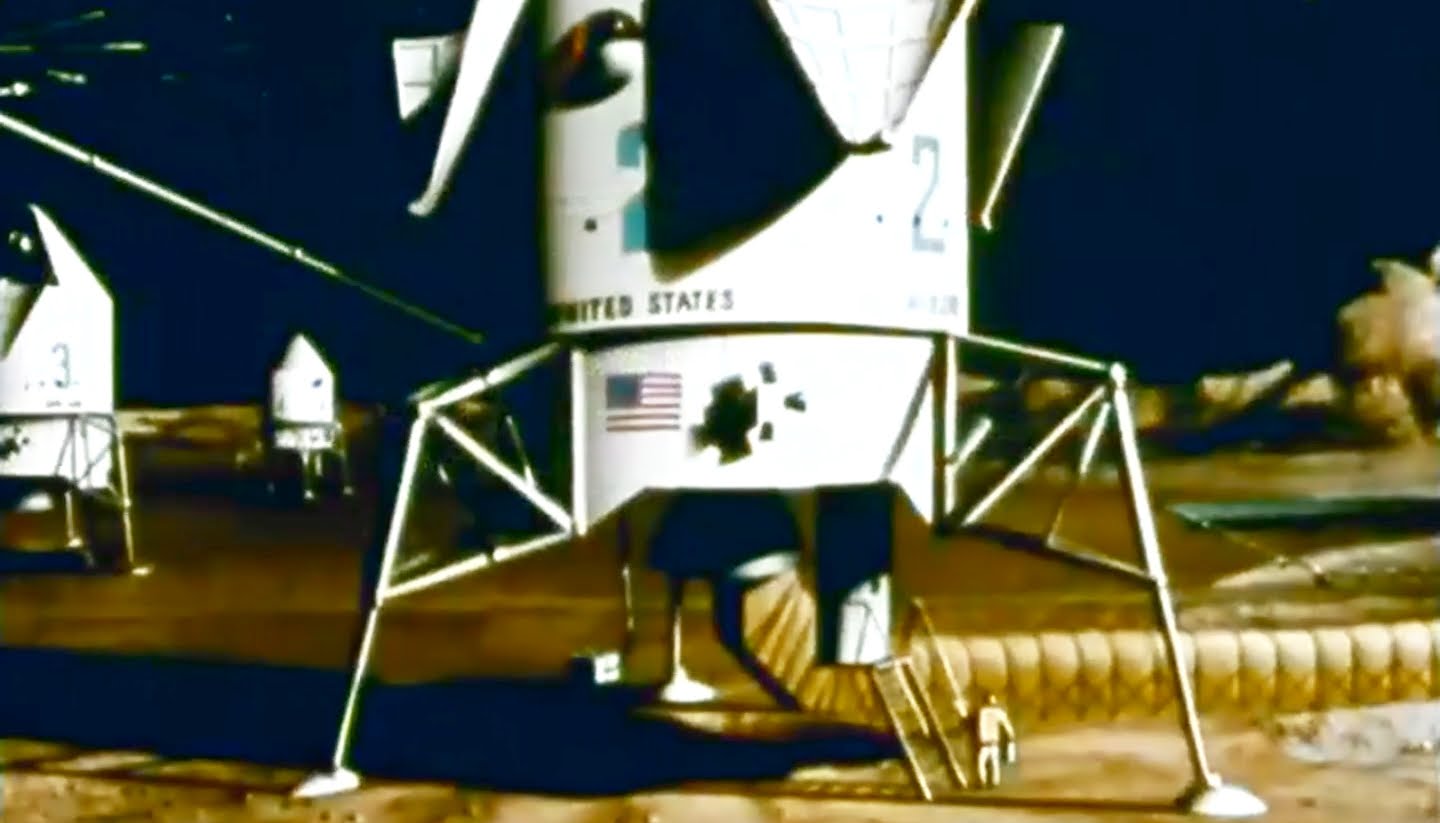NASA & Space Miscellany playlist:
more at:
‘The proposed mission to explore the moon, in addition to further missions, will require the acceleration and deceleration of very heavy loads. This documentary explores the use of nuclear propulsion to complement the chemical fuels used in today’s rockets. Includes: a Saturn 5 rocket on its launchpad, launch and flight [including stage separation and air-ground shots]; the concept of substituting a nuclear 3rd stage to increase payload velocity; 1950s research in New Mexico to determine the feasibility of nuclear energy in rocket propulsion; development of engine technology via the NERVA [Nuclear Engine For Rocket Vehicle Applications] project, engine testing; a description of how this technology may be used for a theoretical mission to Mars.’
Produced for NASA-AEC by Graphic Films.
Public domain film from NASA, slightly cropped to remove uneven edges, with the aspect ratio corrected, and one-pass brightness-contrast-color correction & mild video noise reduction applied.
The soundtrack was also processed with volume normalization, noise reduction, clipping reduction, and/or equalization (the resulting sound, though not perfect, is far less noisy than the original).
The Nuclear Engine for Rocket Vehicle Application (NERVA) was a U.S. nuclear thermal rocket engine development program that ran for roughly two decades. NERVA was a joint effort of the U.S. Atomic Energy Commission (AEC) and NASA, managed by the Space Nuclear Propulsion Office (SNPO) until both the program and the office ended at the end of 1972.
NERVA demonstrated that nuclear thermal rocket engines were a feasible and reliable tool for space exploration, and at the end of 1968 SNPO certified that the latest NERVA engine, the NRX/XE, met the requirements for a human mission to Mars. Although NERVA engines were built and tested as much as possible with flight-certified components and the engine was deemed ready for integration into a spacecraft, much of the U.S. space program was cancelled by Congress before a manned visit to Mars could take place.
NERVA was considered by the AEC, SNPO and NASA to be a highly successful program; it met or exceeded its program goals. Its principal objective was to “establish a technology base for nuclear rocket engine systems to be utilized in the design and development of propulsion systems for space mission application”. Virtually all space mission plans that use nuclear thermal rockets use derivative designs from the NERVA NRX or Pewee…
History
Project Rover
Los Alamos Scientific Laboratory began researching nuclear rockets in 1952, accelerating into Project Rover in 1955 when the deputy director of Lawrence Livermore National Laboratory, Herbert York, postulated a way to shrink reactor weights considerably. By 1961, after unexpectedly fast-paced progress on the part of Project Rover, NASA’s Marshall Space Flight Center began to use nuclear thermal rockets in their mission plans. Marshall planned to use a nuclear-powered rocket from Los Alamos to power a RIFT (Reactor-In-Flight-Test) nuclear stage to be launched as early as 1964, and the need for planning and oversight led to the formation of the Space Nuclear Propulsion Office. SNPO was formed so that the AEC and NASA could work together, and H. B. “Harry” Finger was selected as its first director. Finger made a decision to delay RIFT, and he defined strict objectives for nuclear rocket engines to achieve before RIFT would be allowed.
Finger then immediately selected Aerojet and Westinghouse to develop the NERVA engine. SNPO would depend on what was then known as Los Alamos Scientific Laboratory to supply technology for NERVA rocket engines as part of Project Rover. SNPO chose the original 825 second 330 kilonewtons (75,000 lbf) KIWI-B4 nuclear thermal rocket design, named after the Kiwi, a flightless bird native to New Zealand, as the baseline for the 130 cm (52 in) (6.7 m (22 ft) from thrust structure to nozzle bottom) NERVA NRX (Nuclear Rocket Experimental). Phase 2 of Project Rover became called Phoebus, and Phase 3 was known as Pewee, demonstrating much higher power (4000 MW), power density and long-lived fuels, but these programs did not make their way to NERVA. Working NERVA designs (termed NERVA NRX) were based on KIWI; by the time Pewee started testing, the Apollo program had largely been defunded by the Democratic majority led 93rd United States Congress. Plans to send humans to the Moon and Mars had been indefinitely delayed…

